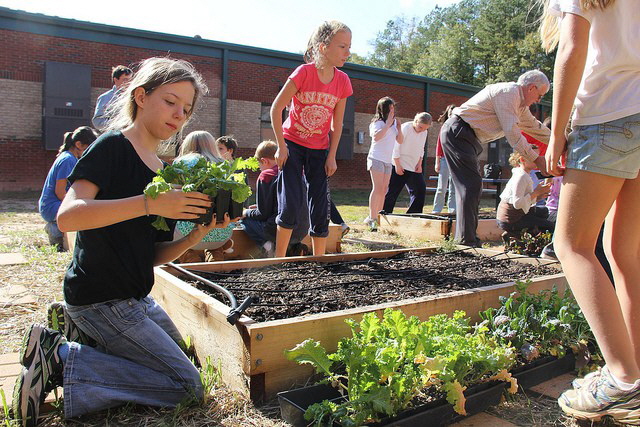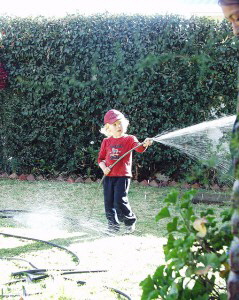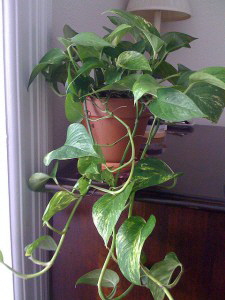|

Gardening: outdoors – indoors – pretend
September 3, 2014
Does your little one have a green thumb? Make it real and use your budding horticulturist helper in your garden to plant seeds, pull weeds and harvest your produce. If you already have a garden, what about giving your child a say in what is planted. A couple of rows can be theirs to watch or tend as your child’s age and interests permit. If you don’t have a garden then create a space, even one foot by one foot where your child can have a flower and vegetable plant of their own.
Your child will be more successful if you help them with their selections. Choose plants that meet their temperament. If they value the choosing then alert them to the potential challenges of their choice; maybe you’re just barely in rhubarb's range or you have tried milkweed from seed before without success.
If your gardener is really keen to have success, then choose a flower that grows well and easily in your area and ideally lasts a long time. Or choose a leaf vegetable like spinach or kale that grows easily. They can cut a few leaves off every few days for the season; harvesting again and again.
You know yourself how rewarding and frustrating gardening can be. When the plants, weather and bugs cooperate, you are the creator. When you choose the wrong plants, or the weather doesn’t cooperate or your cucumbers end up for the borers and squash bugs then it’s not so fun. In either case it’s an adventure with lots of learning about following instructions, proper care and attention, and life and death.
Death for the cucumbers can mean life for the squash bugs. Maybe he switches allegiance midstream and his garden becomes a squash bug sanctuary. You can look under the leaves for the little bronze red eggs and follow their development to nymphs and adults. Eggs will hatch in seven to nine days. Nymphs grow to adults in about 30 days. (Got the cycle days here at the University of Florida)
With a bit of imagination this activity can be brought indoors, too. Pothos ivy grows easily indoors almost everywhere and can be started from soft cuttings. Field trip to the nursery and get some advice. Tell the sales person what you are up to and they will suggest some alternatives to do what you want; window plant, live in the bathroom, little care, lots of care. Orchids are beautiful and exotic and we’ve killed every one we’ve brought home. Air plants require no soil and very little maintenance and still add some life and green.
Skills/learning/benefit: role play, kinesthetic, sensory, creative, fine motor
The Props:
Outdoors: Pint sized safe garden tools, an apron, their own plastic plant pots and gloves set the stage! Be willing to tolerate a bit of mess if you’re outdoors with this activity. If you’re indoors, you can substitute crumbled tissue paper for ‘dirt’ , a few artificial flowers or play vegetables and the story is on! Don’t forget a sunhat and the basket for harvesting! you’re outdoors with this activity. If you’re indoors, you can substitute crumbled tissue paper for ‘dirt’ , a few artificial flowers or play vegetables and the story is on! Don’t forget a sunhat and the basket for harvesting!
Indoors: Maybe a suitable watering can for helping control how easy it is to water their plants. What about a schedule or a log to help understand what’s working. You can always do a mini science experiment and try different fertilizers or schedules on similar plants to see what works the best. A nursery expert will be a valuable resource as well as the instructions that come with your plants and the internet. I think plants that get a little wilted when they are thirsty are fun; it’s like they’re talking to you with their body language. They’ll perk right up when watered; how satisfying is that? We have a bell pepper in the garden right now that’s in my head as a model.
Imaginative play: Playdough can be the soil. Paper, construction paper cutouts can be the flowers. Pipe cleaners or pencils can be the stems. Bring in few pots and fill them with aquarium gravel for an indoor potted plant.
Real or imagined flowers, gardening and plants offer a field for exploration.
|